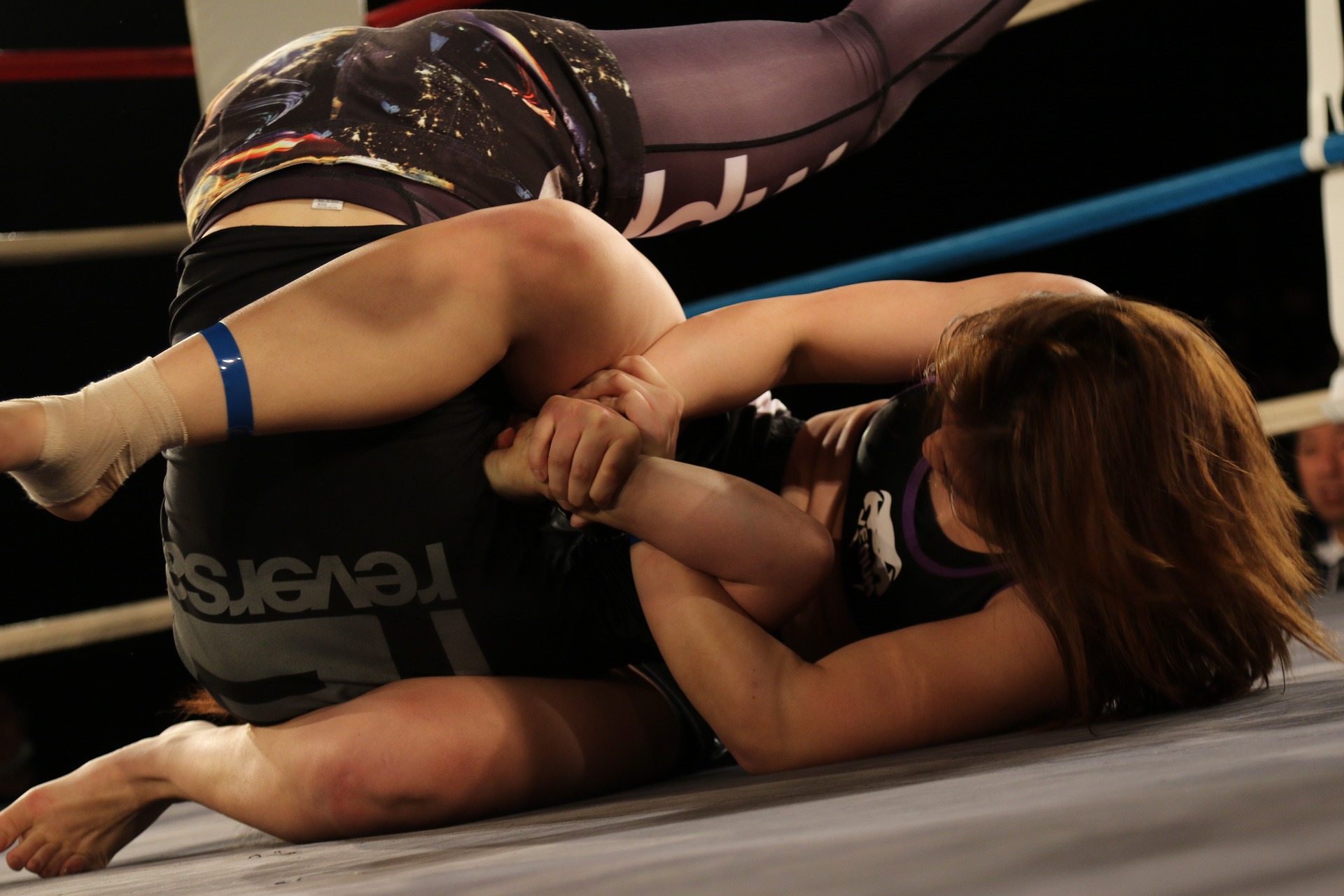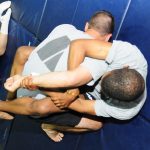
Submission wrestling is essential for MMA fighters for two simple reasons. It gives you the skill to submit your opponent and avoid being submitted by him.
The strategy employed by a submission fighter is to score a takedown on the opponent. From there he will work to get himself into a dominant position. Finally, from his superior position he will apply a submission hold. After that he just waits for the tap.
What takedowns, positions, and submissions the fighter gravitates toward are greatly determined by his training background. Both the styles he has trained in and who he has trained with will makeup his background.
Some of the many arts that would be termed a submission wrestling style are…
- Brazilian Jujitsu – Style developed from classical jujitsu and judo by the Gracie family.
- Sambo – Russian grappling art with many similarities to judo.
- Judo – Japanese martial art with a heavy focus on throws and sweeps from the clinch.
- Catch Wrestling – American form of submission fighting with origins in both Europe and Asia.
- Shoot Wrestling – Japanese submission grappling style with roots in catch wrestling.
Many fighters pick and choose certain elements from all of these styles. Then put them together under one name which is usually referred to as submission wrestling, submission grappling, or submission fighting.
These days the trend is moving toward practicing some kind of hybrid art with elements of all the styles used. Although that is the case, you can still find many fighters who specialize in just one art. The most common example of that is the MMA fighter who uses only BJJ for his ground skills.
To use the classical submission grappling styles in MMA the practitioner needs to make some adaptations. In most MMA fights you and your opponent will not be allowed to wear a uniform (Gi). That means a lot of the moves in BJJ, Judo, and Sambo will need to be changed. Grabbing the Gi when throwing your opponent will need to be replaced with holding onto the limbs or trunk of the body. Using the Gi for handles to maneuver both your opponent and yourself, while on the ground, will not be available. Once again you will need to use the opponent’s actual body.
In Sambo the practitioners wear wrestling shoes. This will have an effect on a couple of things. Whoever is wearing the shoes can lock their legs together in the guard position much more securely. Also, whoever is wearing them is more susceptible to ankle locks. So you can see that someone with a background in Sambo who wishes to use it in a MMA fight will need to be aware of a few things. They will need to realize that both their guard and their opponents may be easier to open. They must also be aware that the man they are fighting could slip out of an ankle lock more easily.
Another factor to consider when training for MMA submission wrestling is strikes. There are techniques used in both classical styles and modern hybrid arts that could leave you open to being struck. When training for MMA, make sure you get in a lot of grappling sessions that also allow strikes. This will give you a good idea of what moves can put you in harm’s way. From there you can make a decision about whether it is worth the risk.
Let’s not forget the judges. In their eyes the man on top is in a superior position. Of course the fight can be ended from the bottom, but if it’s close and goes to decision, usually the man on top gets the win. So you may want to tweak your game a bit to take that into consideration.
Some of the many positions used in submission wrestling are…
- Guard – Practitioner is on his back using his legs to control and protect against his opponent.
- Full Guard – Both legs wrapped around opponent’s torso.
- Closed Guard – Full guard with feet hooked together.
- Open Guard – Full guard with feet unhooked.
- Half Guard – Opponent is halfway out of the guard with one leg left in.
- Butterfly Guard – The insteps of the practitioner’s feet are placed on the inside of the opponent’s thighs.
- Spider Guard – Practitioner holds the opponent’s arms while controlling him with the soles of his feet.
- De La Riva Guard – A form of open guard used when opponent is standing. Also known a the Jello Guard.
- X – Guard – A form of open guard used on a standing opponent.
- Mount – On top of opponent in a dominant position.
- Top Mount – Straddled across opponent while he is facing up, sitting on his torso.
- Rear Mount – Sitting on opponent’s torso while he is facing down.
- Side Mount – On top and to the side of opponent pinning them. Also known as side control and cross mount.
- Reverse Mount – Same as top mount, except practitioner is facing toward opponent’s legs.
- North/South position – One man on top and one on bottom, chest to chest. Heads facing in opposite directions.
- Knee On Stomach – Knee is placed on opponent’s stomach from top position.
- Scarf Hold – On top and to the side of opponent holding their head and one of their arms.
- Modified Scarf Hold – On top and to the side of opponent holding their arms in over and under hooks.
Now let’s see some submission wrestling in action…
Check out our submission holds page if you would like to learn about the different submissions used in submission wrestling and mma. It’s a great place to start learning some of the grappling techniques we just witnessed.



[…] Note: The styles listed on this page are those that are not submission based. You can learn about submission wrestling styles here. […]
[…] Below you will find a list of the holds used in submission grappling. […]
This is a good article you have